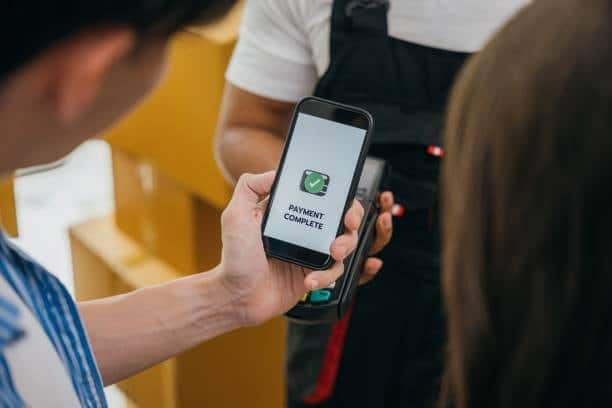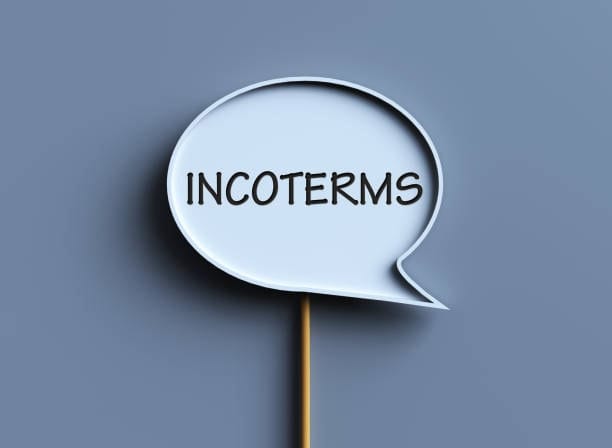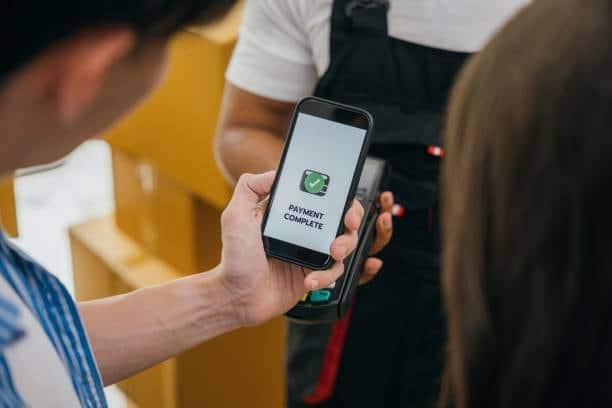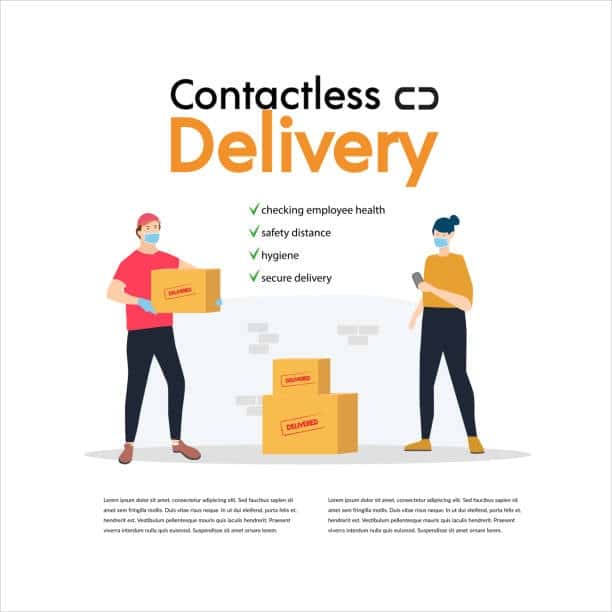Introduction
The responsibilities and cost distribution as well as risk management between buyers and sellers in global trade and logistics operations depend heavily on shipping terms. The “Carriage Paid To” (CPT) shipping term remains an essential Incoterm which defines the border logistics flow of goods. This complete guide explains what CPT represents while describing its operational process alongside its benefits, including freight charges, alongside restrictions and provides situations where businesses should adopt these shipping conditions.
What is Carriage Paid To (CPT)?

The International Chamber of Commerce (ICC) has established the internationally recognized shipping term Carriage Paid To as a member of the Incoterms rules. Starting in the Incoterms 1990 the CPT shipping term requires sellers to bear transportation costs up to an identified destination. This clause continues in all following Incoterms revisions to date. When using CPT terms, as per the cpt agreement, the seller remains responsible for bearing all shipping expenses but risk passage occurs when the first carrier completes delivery of goods to their specified destination.
How CPT Works in Practice

Key Responsibilities Under CPT
Under a Carriage Paid To (CPT) contract, as outlined in the cpt incoterms, the responsibilities fall into two distinct sections between the parties.
Seller’s Responsibilities:
- The party should give both goods and commercial invoices according to contractual demands.
- The supplier buys then arranges the complete transport for the mentioned final destination.
- The seller completes export clearance responsibilities while handling needed documentation.
- The seller must transport items to the chosen first carrier.
- The seller must cover every payment for the goods throughout their journey to their designated destination.
Buyer’s Responsibilities:
- Placing receiver’s choice at the destination where the carrier performs delivery of products.
- The purchaser bears all perils after the first carrier successfully accepts the products.
- The responsible party will deal with import clearance processes while paying all necessary customs duties along with taxes.
- The responsible party for unloading fees at the final location must handle them unless the transport agreement includes this expense.
- The buyer must secure supplementary insurance and make the payments for insurance coverage beyond port or terminal service at the location specified.
Risk Transfer Point

Understandment of risk transfer timing between seller and buyer stands as one of the essential components of operating under CPT terms, particularly regarding transportation risks . Unlike some other Incoterms where risk and cost transfer simultaneously, under CPT terms:

- Appearing on the seller’s invoice are the costs to deliver freight to its designated endpoint.
- Since the goods reach their first carrier the ownership transfer moves to the buyer.
- During transit the buyer faces the risk even though the seller is responsible for payment of transport costs to the specified destination.
Both parties need complete understanding about this separation regarding obligation transfer which obtains particular importance in insurance contexts.
CPT vs. Other Incoterms

CPT vs. CIP (Carriage and Insurance Paid To)
CPT and CIP carry several common elements but differ mainly through these points:
- The seller has no insurance duty when selecting CPT.
- Under CIP the seller needs to buy a minimum level of insurance policy to cover goods during their travel.

Buyers receive better legal protection through CIP because it extends insurance coverage yet the cost tends to be higher.
CPT vs. DAP (Delivered at Place)

The principle distinctions between CPT and DAP consist of:
- CPT risk transfer starts upon delivery of merchandise to the first carrier service.
- Risk transfer under DAP occurs only after delivery at the destination specified in the agreement.
- During the transit period under DAP the seller maintains complete responsibility with accompanying increased potential risks.
CPT vs. FCA (Free Carrier)

The delivery process to a carrier stands as a common procedure between these terms.
- Under CPT, the seller pays for the main carriage to the destination
- Under FCA, the buyer arranges and pays for the main carriage
- CPT extends the seller’s cost responsibility further in the supply chain
Advantages of Using CPT Terms

For Sellers
- Clear limitation of risk exposure after delivery to the carrier
- The seller possesses authority to choose their transport providers as well as the specific routes for shipment.
- The seller can integrate transportation costs directly into the price they charge for the goods.
- The documentation process under CPT terms remains easier than what destination-based terms provide.
- Under this shipping term sellers maintain their contractual duties outside of the territory they are not delivering to.
For Buyers

- The seller takes care of arranging international shipment for you.
- Shippers will experience foreseeable landed costs which include shipment expenses.
- The buyer has one point of contact to arrange their shipping needs.
- Better shipping costs become available when sellers work with established shipping providers.
- Freedom from export compliance responsibilities
Challenges and Limitations of CPT

Potential Issues
- Risk/cost split creates insurance gaps that could develop when such areas are not correctly managed
- Purchasers have restricted powers to decide which carriers deliver their goods or make delivery decisions.
- Conflicts can occur between parties over which party must take responsibility when delays or damages happen during transportation.
- Less visibility for buyers into the shipping process
- Potential for miscommunication about exact delivery locations
Documentation Requirements

CPT terms require proper documentation as an essential condition.
- Commercial invoice
- Packing list
- The necessary shipping documents include bill of lading together with air waybill and other transport documents.
- Insurance certificate (optional but recommended)
- Export licenses together with certificates of origin must be submitted when necessary.
- Proof of delivery to carrier
When to Use CPT Terms

Ideal Scenarios
The CPT terms suit situations most effectively when shipping through containers by sea or air or rail or by multiple transport methods.
- Shipping through standardized containers occurs by ship as well as plane and train and combined forms of transport.
- The seller possesses superior capabilities to obtain transport services because of market position
- CPT terms serve markets that experience difficulties in international transportation arrangement by buyers.
- The seller uses CPT to offer complete service delivery while protecting themselves from potential risk.
- Several shipments occur between two companies that maintain a well-established trading relationship.
Less Suitable Situations
CPT should not be selected under the following conditions:
- The purchaser must retain total authority to organize shipping services without limits.
- The goods combine both high-market value and high-transportation risk aspects during transit periods.
- Transportation options within the destination area present difficulties or expense to customers
- The shipping costs offered to the buyer by carriers are noticeably lower.
- Complete door-to-door delivery needs should be handled through either DAP or DDP agreements ( gratuite transport du port vers le destinataire ou transport du port au port.)
Practical Applications of CPT in Different Industries

Manufacturing and Industrial Goods
The CPT term supplies manufacturing companies with a sensible option to transport machinery and industrial equipment through logistics pipelines. The manufacturer maintains logistics control at distribution base points enabling buyers to coordinate final delivery by making use of their understanding of local transportation systems.
Retail and Consumer Goods
Economic operators who run warehouse and distribution centers at ports or main logistics locations tend to select CPT as their preferred shipping option. Suppliers use this term to oversee international shipping duties and export fees while such services remain under the retailer’s domestic distribution authority.
Technology and Electronics
CPT establishes a framework enabling technology firms sending expensive components and completed products to determine risk transition points and realize clear insurance needs for safeguarding electronic items in transit.
Best Practices for Using CPT Terms
Clear Contract Specifications
In sales contracts which adopt CPT sellers must specify all essential elements including the designated destination point together with loading and unloading responsibilities and insurance requirements and required documentation and procedures dealing with delays together with damage management protocols.
- Every description of the particular destination address needs to be exact.
- The party needs to pay attention to loading/unloading procedures
- Insurance expectations and recommendations
- Required documentation and timing
- The contract includes step-by-step procedures to handle shipment delays together with casualty reports.
Risk Management Strategies
These are the measures that businesses should take to minimize CPT’s related risks:
- All buyers should obtain supplementary insurance coverage for their shipments.
- The shipping parties need to prepare standard tracking communication systems.
- Full research should be conducted to verify the reliability and trustworthiness of carriers in the market.
- The supplier should document the condition of all goods before sending the shipment for delivery.
- You must create specific procedures that will help with claims processing together with dispute resolution.
Negotiation Considerations
When negotiating CPT terms, consider:
- The designated delivery site alongside its reachable status needs to be specified.
- Transportation costs and network connections should be evaluated between the two involved parties.
- Insurance coverage options and costs
- Payer fees exist during multiple phases of delivery operations through supply networks.
- Currency fluctuations affecting transportation costs
CPT in the Digital Age
Technology Impact
To understand current practice under CPT functions modern technology plays a major role.
- Digital platforms enable users to see their shipments status update in real time.
- By implementing electronic documentation organizations achieve shorter processing cycles and reduce amounts of paperwork.
- The implementation of Blockchain applications enhances supply chains by bringing them toward higher transparency and enhanced security.
- Using data analytics organizations can improve network optimization and carrier choices decisions.
- Effective tracking and communication happen more easily through mobile application interfaces.
Sustainability Considerations
Increasing environmental issues now shape how shippers structure their Carriage Of Goods by Sea agreements:
- Carbon footprint calculations for different transportation modes
- Sustainable packaging requirements
- Green logistics initiatives and their impact on carrier selection
- Regulatory compliance with emissions standards
- Reporting requirements for environmental performance
Regional Variations in CPT Implementation
CPT in North America
The implementation of CPT in North American trade operations includes these characteristics:
- The transportation system utilizes both railroads together with trucks in combination as intermodal transportation.
- The specific locations normally function as distribution centers instead of serving as port facilities.
- Integration with domestic logistics networks
- Compliance with regional trade agreements
CPT in European Markets
European companies use CPT according to these standard implementation methods:
- Consideration of EU customs union requirements
- Multimodal transportation options across relatively short distances
- Higher emphasis on sustainable transportation options
- Integration with EU-specific documentation requirements
CPT in Asia-Pacific Trade
The shipping procedures that incorporate CPT in Asia-Pacific shipping arrangements generally consist of:
- Risk allocation demands extra attention because of the extended delivery periods.
- The increase in shipping bulk products by sea freight will become more prevalent.
- Complex port logistics at major Asian shipping hubs
- Navigation of varying customs requirements across diverse markets
Common Mistakes and How to Avoid Them
Misunderstanding Risk Transfer
Most parties misunderstand CPT because the risk transfer occurs to the first carrier upon delivery but not at the final destination. The absence of proper insurance coverage by buyers creates gaps in their protection because the risk transfer happens to the first carrier rather than the destination.
Imprecise Destination Naming
When using the CPT transportation term for London delivery the lack of accurate endpoint information can lead to contract disputes. All delivery addresses must include exact locations which should mention terminals along with airports and detailed addresses.
Overlooking Local Charges
Buyers sometimes forget that CPT doesn’t cover destination charges like terminal handling fees, customs clearance, or unloading costs, leading to unexpected expenses cpt transaction.
Insufficient Documentation
Under CPT rules buyers will often overlook that the term does not include payment for destination costs such as terminal handling expenses and clearance fees and unloading fees which may result in unexpected financial burdens seller delivers.
Future Trends Affecting CPT
Evolving Supply Chains
CPT terms will probably transform into the following configuration:
- Increasing regionalization of supply chains
- Greater emphasis on resilience and redundancy
- Growth of direct-to-consumer international shipping
- The platform integrates with fulfillment centers to deliver goods during the last stage of delivery.
Regulatory Changes
The following regulations are predicted to affect usage of CPT:
- Stricter emissions standards for international shipping
- Enhanced security requirements for cross-border freight
- Digital customs clearance initiatives
- Standardization of electronic transport documents multiple carriers
Conclusion
Carriage Paid To functions as a specific arrangement which divides control duties between seller and buyer in international commerce. The arrangement gives sellers extra authority to perform elaborate services for buyers by securing shipping costs and selecting transport services and protects them from responsibility after carrier transfers occur terminal handling charges. CPT simplifies purchasing for buyers because it includes transportation and when the seller pays freight charges, it enables them to maintain control of importing clearance and distributing goods locally seller assumes.
CPT delivers its intended outcomes when sellers effectively communicate the terms and when they demonstrate absolute understanding of the documentation while maintaining close attention to its accuracy cpt price. If implemented correctly CPT establishes a beneficial relationship which maximizes the power of each member in the supply chain delivered duty paid.
The Carriage Paid To (CPT) provision continues to serve international shipping needs because it embodies flexibility through market adaptation while using established contractual principles.




